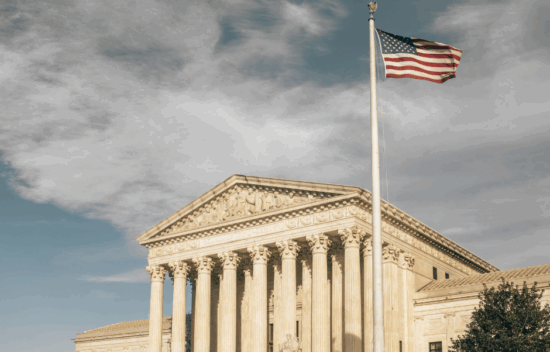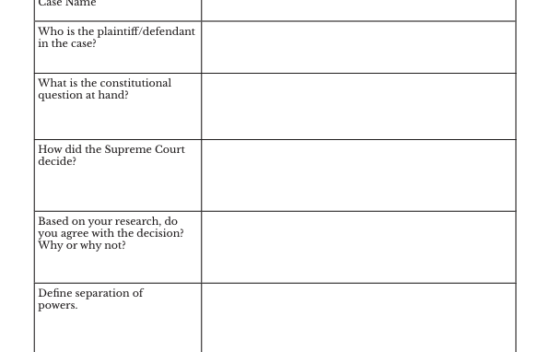
Separation of Powers and Summer 2025 Supreme Court Decisions
Objectives:
- Students will explore a recent Supreme Court case and understand the constitutional questions involved
- Students will assess how the case demonstrated our system of separation of powers
Introduction:
The Supreme Court had a busy summer during which it made multiple important rulings. The Court plays an important role in our constitutional system by interpreting the meaning of laws in cases. However, it is not just the Court that does this, as Congress, the executive, state governments, and local law enforcement, and citizens also have the responsibility of understanding and interpreting the Constitution so that they can carry out their duties.
Materials:
Engage (5-7 minutes):
- Begin class by writing the definition of separation of powers on the board: “The branches of government each have powers to limit the powers of the other branches and to prevent any branch from becoming too powerful.”
- Ask students to name a few examples of separation of powers within our constitutional system. Examples include the president issuing executive orders, Congress passing a constitutional amendment, the Supreme Court declaring a law unconstitutional, and state governments filing lawsuits against the federal government. Discuss the concept of dividing authority and how having a system where branches and levels of government “compete” with each other and don’t always work together is a feature, not a flaw, of our system.
Separation of powers creates “healthy tension” where each branch works to exercise its authority to prevent the other from becoming too powerful. This system protects liberty and prevents tyranny from a single branch. The Supreme Court is just one of the multiple components of our system that plays a role in maintaining this healthy tension. In our system of federalism, state governments also play a role in having their own powers, which can lead to further tensions. Finally, citizens demonstrate their powers by voting out officials in elections and filing lawsuits to challenge the constitutionality of a law or policy.
Explore (20-25 minutes):
- Divide class into groups. Have each group research one of the following Supreme Court cases that were decided this summer. Scaffolding note: Depending on class size, some cases may have more than one group researching.
- As students research, have them answer the following questions in their graphic organizer.
- Scaffolding note: Oyez (hyperlinked above for each case) and Wikipedia are good starting points for students to conduct their research.
Assess/Reflect (3-5 minutes)
- Once students are finished reading and compiling their research, lead a class discussion on how they believe each case study demonstrated the system of separation of powers.
- Here are example questions to use to start the discussion:
- How did the actions in your case demonstrate the system of separation of powers? Which branches/levels of government/citizens were involved?
- How does this example reinforce the idea that separation of powers help protect liberty and our constitutional system?
(Optional) Extend
- Have students research a Supreme Court case that is currently pending and write a short essay describing the case and how it demonstrates a system of divided power.


